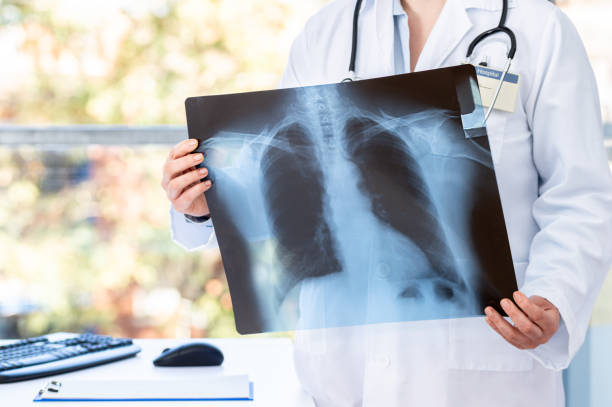Bronchiectasis is a chronic lung condition characterized by the abnormal widening and damage of the bronchial tubes. This leads to persistent coughing, production of mucus, and frequent lung infections, among other symptoms. Here, we’ll discuss the symptoms of bronchiectasis and the treatment options available for managing the condition.
Symptoms of Bronchiectasis
Persistent Coughing: The most common symptom of bronchiectasis is a persistent cough that produces a large amount of mucus. This cough can be productive or non-productive and is often accompanied by wheezing or shortness of breath.
Mucus Production: Bronchiectasis causes an overproduction of mucus, which can cause a persistent cough. This mucus is thick and can be difficult to remove, making it easier for bacteria to grow and cause infections.
Chest Pain: Chest pain is another common symptom of bronchiectasis. The pain is usually caused by the inflammation of the bronchial tubes, and it can be sharp or dull.
Shortness of Breath: Bronchiectasis can cause shortness of breath due to the accumulation of mucus in the lungs, leading to breathing difficulties.
Fatigue: People with bronchiectasis may also experience fatigue due to the extra effort required to breathe and to remove the mucus from their lungs.
Recurrent Lung Infections: Bronchiectasis can also cause recurrent lung infections, such as pneumonia, bronchitis, and sinusitis. These infections can make existing symptoms worse and lead to additional lung damage.
Treatment for Bronchiectasis
Antibiotics: Antibiotics are prescribed to treat bacterial infections that occur in the lungs. The type of antibiotics used will depend on the type of bacteria causing the infection.
Mucolytics: Mucolytics are medications that help to thin and break down mucus, making it easier to cough up. They can help to reduce the amount of mucus in the lungs and make it easier to breathe.
Bronchodilators: Bronchodilators are medications that help to open up the airways and improve breathing. They are often used in conjunction with other treatments for bronchiectasis.
Chest Physiotherapy: Chest physiotherapy, also known as postural drainage, involves positioning the patient in a way that allows the mucus to drain from the lungs. This is often done with the help of a physiotherapist.
Oxygen Therapy: Oxygen therapy may be necessary for people with severe bronchiectasis who have difficulty breathing. This involves the use of oxygen tanks to increase the amount of oxygen in the lungs.
Surgery: In some cases, surgery may be necessary to remove damaged sections of the bronchial tubes. This can help to improve breathing and reduce the risk of recurrent infections.
Conclusion
Bronchiectasis is a chronic lung condition that can cause persistent coughing, production of mucus, chest pain, shortness of breath, fatigue, and recurrent lung infections. Treatment for bronchiectasis may include antibiotics, mucolytics, bronchodilators, chest physiotherapy, oxygen therapy, and surgery. If you suspect you may have bronchiectasis, it is important to seek medical attention for an accurate diagnosis and appropriate treatment. With proper care and management, it is possible to reduce symptoms and prevent further lung damage.

 Home
Home Health
Health Diet & Nutrition
Diet & Nutrition Living Well
Living Well More
More












